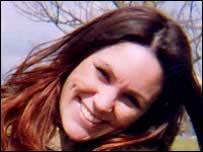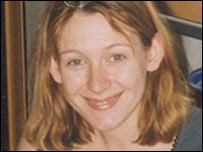|
Ipswich prostitute murders: the victims
Five women were found murdered around
Ipswich in December 2006
Tania Nicol

Tania Nicol, 19, was the youngest of the victims and the first to go
missing, the court heard.
A last possible sighting of her was
made at 11pm on October 30, 2006 in Ipswich’s red light area close to
the town’s football stadium, south west of the town centre.
Her naked body was found five and a
half weeks later on December 8 in a stretch of water called Belstead
Brook close to an area called “Copdock Mill".
The site was off an old and
practically disused stretch of trunk road that runs next to the A12 and
close to the A14, the jury heard.
Her body was trapped in debris within
the brook a short distance from a road bridge which carried a quiet
stretch of road over the brook.
It was likely Miss Nicol was already
dead when she entered the water, having been asphyxiated, but it could
not be ruled out that the final cause of death was drowning, the court
heard.
A bruise on the back of her knee may
have been due to “forcible restraint” but there were no other obvious
injuries.
She was placed in the water at around
the time she went missing, the court heard.
Gemma Adams

Gemma Adams, 25, was the second woman to go missing from the streets of
Ipswich and her naked body was the first to be found on December 2,
2006.
She had been missing for two and a
half weeks and was last seen either at 10.30pm on November 14, 2006 or
in the early hours of the following day.
Her body was found in the same brook
as Miss Nicol, further upstream towards Hintlesham.
She was discovered near a bridge over
the brook that is on the road out from Ipswich.
The disappearances of Miss Adams and
Miss Nicol happened at a time of “inclement” weather when Belstead Brook
had flooded and it was only after the water level fell that their bodies
were found, the court heard.
They may have been carried some
distance downstream from where they were dumped. Like Miss Nicol she was
asphyxiated but drowning could not be ruled out as the final cause of
death.
The deaths of Miss Adams and Miss
Nicol were “inextricably linked,” the court heard.
Anneli Alderton

The naked body of Anneli Alderton, 24, appeared to have been
deliberately “posed” in a “cruciform” shape with the arms outstretched,
the court heard.
She had gone missing on December 3,
2006 the day after the first body, that of Gemma Adams, was found.
Miss Alderton’s body was discovered on
December 10, 2006 in a stretch of woodland just off the A14 to the south
east of Ipswich.
She had been asphyxiated and her body
had lain at the scene for some time.
She was probably murdered elsewhere
and then dumped at the isolated spot, the court heard.
A post mortem showed she had been left
at the spot where her body as found soon after her death.
Prosecutor Peter Wright QC said: “The
site at which her body was abandoned indicated a degree of local
knowledge on the part of her killer or killers. They, we say therefore,
had chosen well. It was relatively isolated yet readily accessible.”
Annette Nicholls

The naked body of Annette Nicholls, 29, also appeared to have been posed
in a “cruciform” pose with outstretched arms, the court heard.
She was last seen alive on the
afternoon of December 8, 2006 and her naked body was found four days
later just off Old Felixstowe Road, a short distance from the A14
southeast of Ipswich.
An expert on fly infestation
established that the she had been dead and in the position she was found
for three or four days.
Her body was found by a police
helicopter which had been called to the scene following the discovery of
the body of the fifth victim Paula Clennell.
The two bodies were only a few hundred
yards apart along the Old Felixstowe Road.
Prosecutor Peter Wright QC told the
jury: “You may conclude that by now the disappearance of these women and
the discovery of their bodies was the work of someone, either alone or
with the help of another, who was engaged on a quite deliberate campaign
of murder directed at the working prostitutes of Ipswich.
"The chances of each of these women
having met wholly unrelated deaths was by now, you may conclude, so
unlikely as to be capable of being excluded.”
Paula Clennell

Paula Clennell, 24, was last seen alive on December 10, 2006.
Her naked body was spotted by a
pedestrian just off the Old Felixstowe Road southeast of Ipswich two
days later.
When a police helicopter arrived
officers spotted the bodies of both Miss Clennell and Miss Nicholls from
the air.
The cause of death in Miss Clennell’s
case was “compression of the neck", the court heard.
Prosecutor Peter Wright QC said: “The
findings were consistent with compression having been applied to her
neck of the type that would arise from the use of a forearm or the crook
of an elbow in order to restrict her breathing and eventually to kill
her.”
Mr Wright demonstrated how the forearm
would have been used and added: “Such a mechanism would restrict the
breathing of the victim and eventually kill. It had done in her case.”
He said that at the time she was
killed Miss Clennell was “heavily” under the effect of drugs.
Her body had not been “posed” like
those of Miss Alderton and Miss Nicholls and instead “had all the signs
of being hurriedly dumped", Mr Wright said.
He said: “Whether her body had been
abandoned in haste by someone anxious to leave the scene, or fearful of
being disturbed by reason of some particular event, it is not possible
unequivocally to assert.” |






